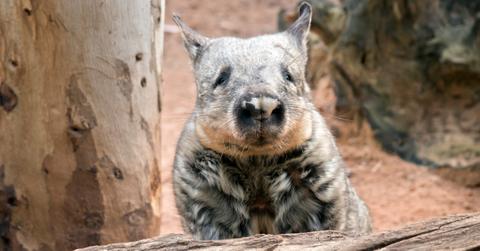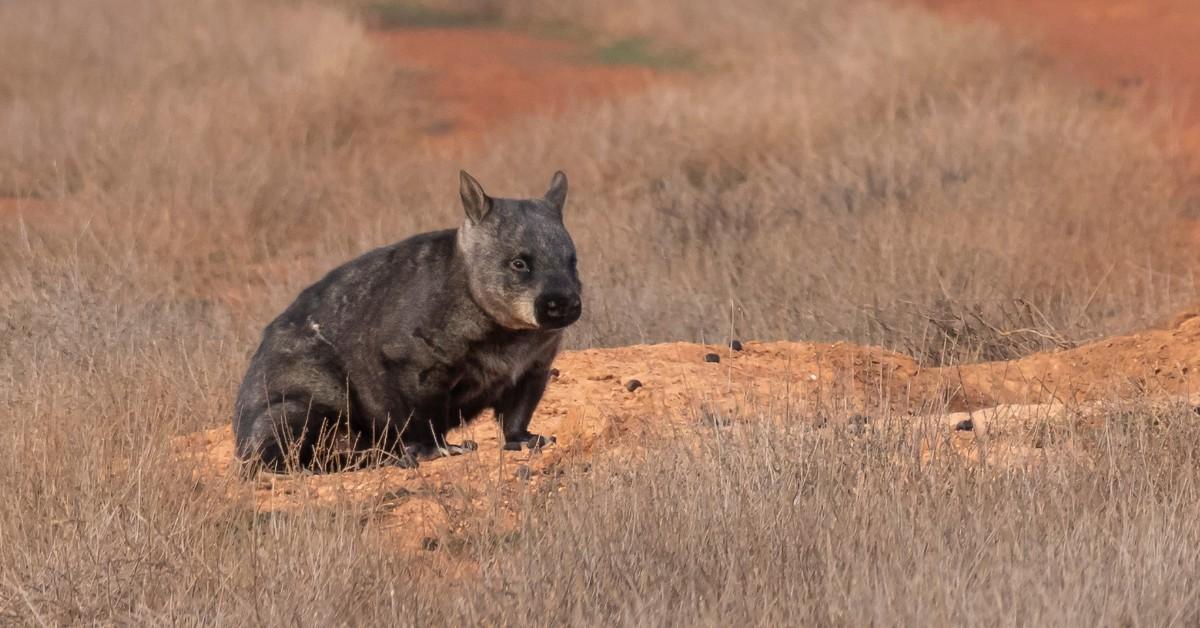Meet the Hairy-Nosed Wombat, the Endangered Animal With a Fluffy Face
These cute critters have been brought back from the brink of extinction... but only barely.
Published Sept. 6 2024, 4:46 p.m. ET

There's a special species of wombat in Australia that has gone largely unseen over the past few decades, due in no small part to their dwindling population. But just because there aren't too many folks who have laid eyes on the northern hairy-nosed wombat, it doesn't mean that the little creatures aren't worth celebrating.
With their plump bodies, big eyes, and (as their name implies) cute hairy noses, there's a lot to love about these marsupials. But with just around 400 of these creatures left on Earth, you may want to learn a bit about them, including what is being done to restore the northern hairy-nosed wombat population.

A northern hairy-nosed wombat was spotted at the Australian Wildlife Conservancy in 2024.
Ecologists are likely tickled after a baby northern hairy-nosed wombat was caught on camera by the Australian Wildlife Conservancy (AWC), according to Newsweek. The organization's experts have been working to try and build up the wombat population in some of the country's conservation areas.
In fact, there are only three spots in Australia where northern hairy-nosed wombats can be found, which include Richard Underwood Nature Refuge (RUNR), where the recent discovery was made.
An AWC field ecologist made the exciting find as he was reviewing old camera footage. The videos had been taken at the park over the course of 100 hours, and they showed the cute moment that the young wombat came out of his burrow to investigate the surrounding area. This was especially notable for the senior field ecologist who made the find, since it painted a positive picture of what has been going on deep within those wombat burrows.
"The wombat is quite robust, indicating that it is feeding well and getting enough nutrition," Andy Howe said in a statement shared by the AWC. "Overall, this bit of footage tells us a lot about the state of the RUNR population, showing us that the wombats have the right conditions and feel comfortable enough to breed."
With northern hairy-nosed wombats only living in two other locations — Powrunna State Forest and Epping Forest National Park — this little offspring is a really good sign for the continued success of the population.
Northern hairy-nosed wombats are extremely rare.
According to the AWC's website, these creatures can live up to three decades, but that doesn't mean you'll have that many chances to see them, because they like to spend their days by themselves and hidden deep in their underground burrows.
Even if they didn't spend so much of their lives out of sight, there just aren't that many of them around. In fact, at one point there were only 35 of these adorable little marsupials left in the world, and they were all tucked away in Epping Forest.
Facts about the northern hairy-nosed wombat that you may not know:
If you can't get enough of these cute little creatures, you may be interested to know a few fun facts about them. First, the northern hairy-nosed wombat has the distinction of being the largest breed of wombats in the country.
Not only do they outsize their fellow wombats, but the AWC notes that they are amazing burrowers, and the tunnels where they spend most of their lives are often long and unique.
Sadly, many of us will never see a baby northern hairy-nosed wombat (aka a joey) because these cute little tykes live in their mother's pouch for the the majority of the first year of their lives, something that allows them to continue developing outside the womb while also being connected to their moms.
As disappointing as it is to know we'll likely never get to witness these creatures in their natural habitats, we'll just have to take solace in the fact that AWC's breeding programs appear to be successful enough that there will continue to be more joeys added to Australia's wombat population at RUNR and beyond.